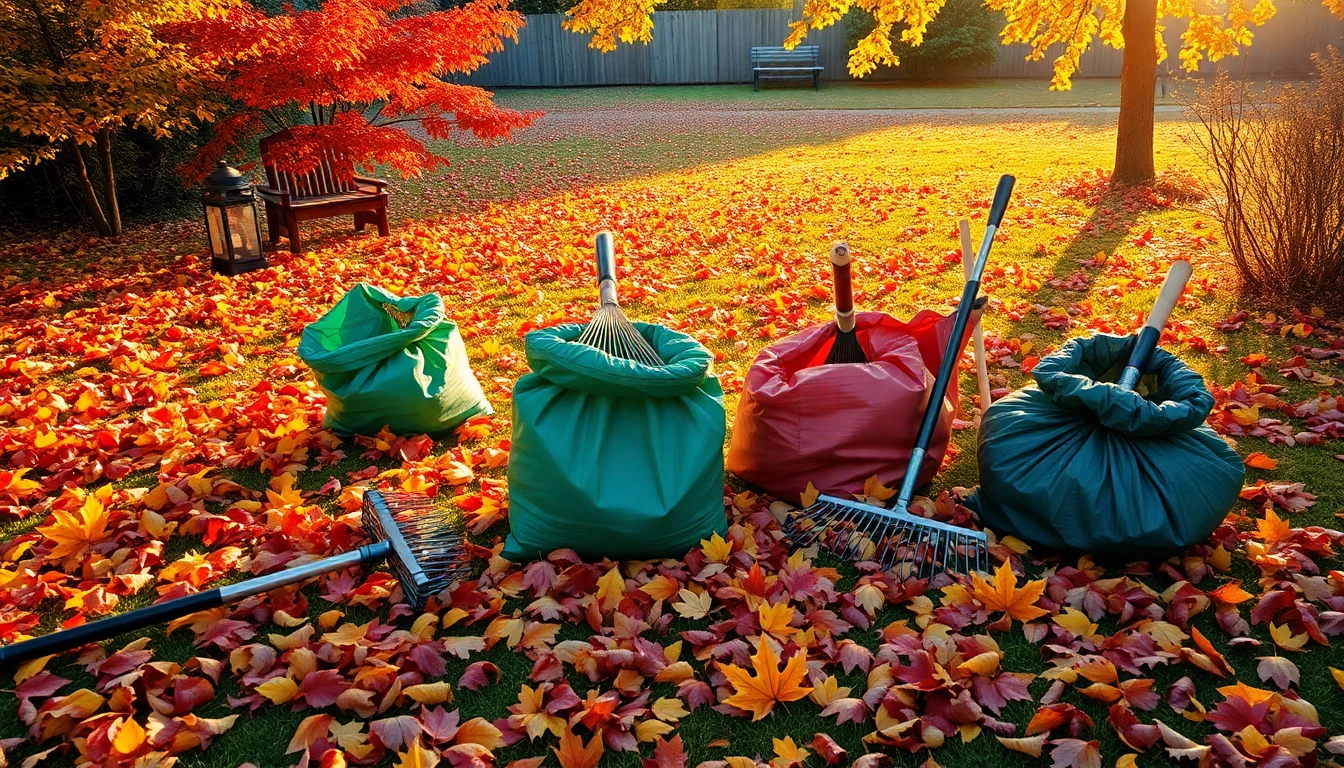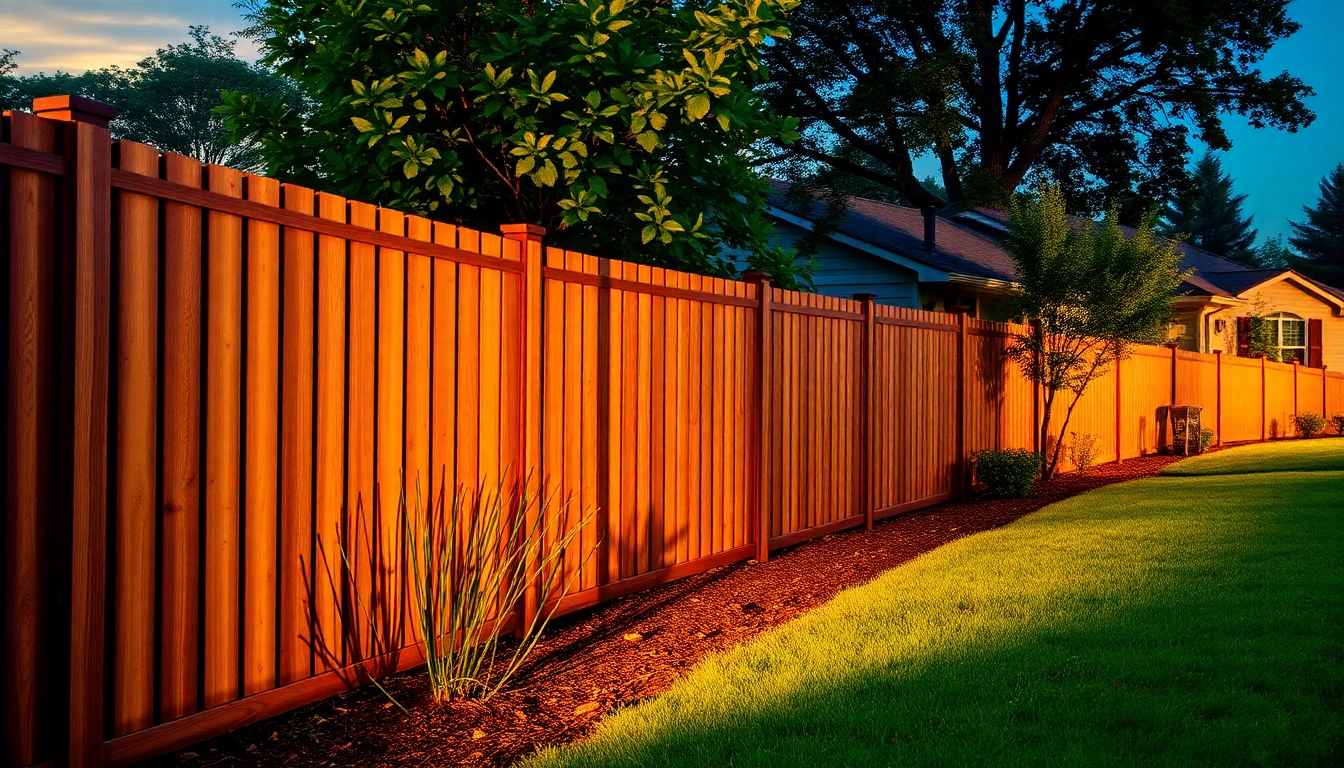Understanding Fall Clean Up
What is Fall Clean Up?
Fall clean up is a comprehensive maintenance activity aimed at preparing your outdoor space for the colder months. It involves a series of tasks designed to clear out debris, improve lawn health, and ensure your garden is ready to handle the challenges of winter. This essential process often includes the collection of fallen leaves, cleaning garden beds, aerating the soil, and pruning plants. By engaging in fall clean up, homeowners can maintain the aesthetic appeal of their properties while also promoting better plant health through effective seasonal care.
Benefits of Seasonal Yard Maintenance
Implementing a fall clean up routine offers numerous benefits for homeowners and their lawns. Some key advantages include:
- Improved Lawn Health: By removing debris and dead foliage, you reduce the risk of fungal diseases and pest infestations that thrive in damp, decaying matter.
- Enhanced Curb Appeal: A tidy, well-maintained lawn creates a positive first impression and can increase property value.
- Soil Preparation: Fall clean up allows you to aerate the soil and amend it with nutrients, ensuring a healthier lawn come spring.
- Winter Protection: Proper clean up helps protect plants from the harsh winter conditions, reducing the chances of damage from snow and ice.
Common Fall Clean Up Tasks
When it comes to fall clean up, there are several core tasks that owners should prioritize:
- Leaf Removal: Collect and dispose of fallen leaves either through composting or disposal services.
- Weed Control: Remove weeds from garden beds to prevent them from taking over during the winter months.
- Pruning: Trim back perennials, trees, and shrubs to promote healthy growth in the spring.
- Mulching: Apply mulch to garden beds to protect roots and suppress weed growth.
- Soil Aeration: Aerate your lawn to improve air circulation and soil health before the winter dormancy period.
Steps for an Effective Fall Clean Up
Planning Your Clean Up Schedule
To ensure an effective fall clean up, it’s crucial to create a well-structured schedule. Start by observing the weather patterns in your area; ideally, you want to perform clean up tasks on dry days when the ground and leaf litter are not wet. A good time to begin is late September to mid-October, before heavy winter precipitation occurs. Setting specific dates for each task, such as leaf collection, pruning, and fertilization, can help streamline the process and keep you organized.
Essential Tools for Fall Clean Up
Having the right tools can significantly improve your efficiency during fall clean up. Some essential tools include:
- Leaf Blower: Ideal for quickly clearing leaves from large areas.
- Rake: A classic tool necessary for gathering leaves and debris.
- Pruners: Essential for trimming plants and removing dead limbs.
- Bagging Set-Up: A must for collection of leaves and organic waste to facilitate disposal or composting.
- Garden Fork: Useful for aerating soil and mixing amendments.
How to Remove Leaves and Debris Efficiently
To maximize efficiency during the leaf removal process, consider the following strategies:
- Start Early: Begin your clean up in early autumn, preventing leaves from piling up and causing more work later on.
- Use a Leaf Blower: Equipped for larger tasks, leaf blowers can save time and help you manage sprawling lawns.
- Layered Clean Up: Tackle one section of your yard at a time to ensure thoroughness and not overwhelm yourself.
- Composting: Where possible, compost the leaves instead of discarding them. This method not only disposes of debris but also enriches your garden soil for future planting.
Fall Clean Up Checklist
Creating Your Personalized Checklist
To ensure no task is overlooked, creating a customized fall clean up checklist is advisable. This should be tailored to your specific yard needs but typically includes:
- Leaf collection and disposal
- Weed removal
- Pruning plants and trees
- Aeration and fertilization of the lawn
- Mulching garden beds
Keep this checklist accessible and update it as needed each fall season to efficiently manage your clean up efforts.
Landscaping Considerations for Fall
During fall clean up, consider how your landscaping choices impact both short-term aesthetics and long-term growth. Reflect on:
- Plant Health: Some plants may need more attention than others based on their fall resiliency.
- Annual vs. Perennial Care: Determine which plants need more immediate care and which should be left for winter dormancy.
- Soil Quality: After clean up, amend the soil to prepare it for spring growth, focusing on nutrient deficiencies.
Maintaining Plant Health During Clean Up
To maintain plant health throughout the fall clean up, adopt these best practices:
- Gentle Pruning: Avoid over-pruning or damaging new growth by keeping cuts clean and minimal.
- Mulch Wisely: Add a protective layer of mulch around plants to conserve moisture and insulate roots.
- Monitor Pests: Check for signs of winter pests while you work, addressing them promptly with organic or chemical treatments as necessary.
Professional Fall Clean Up Services
When to Hire a Lawn Care Expert
While many homeowners may tackle fall clean up themselves, there are compelling reasons to hire professionals:
- Time Constraints: If you’re facing a busy schedule, professional services can significantly lighten your workload.
- Physical Limitations: Those with mobility issues or health concerns may find it challenging to manage the work required.
- Expertise: Trained professionals often know the best practices for maintaining plant health and can provide services tailored to your specific yard needs.
What to Expect from a Service Provider
When hiring a professional lawn care service for fall clean up, expect the following:
- Comprehensive assessments of your lawn and garden
- Thorough cleaning of all debris
- Expert pruning and plant health evaluations
- Soil amendment recommendations tailored to your yard
- Options for ongoing lawn maintenance post-cleanup
Comparing Costs of Fall Clean Up Services
Understanding the costs associated with professional fall clean up is crucial. Prices can vary significantly based on location, property size, and the range of services provided. On average, homeowners can expect costs to range between $200 and $600, depending on the level of service. When comparing quotes, consider what services are included, such as leaf removal, landscaping care, and any follow-up maintenance treatments.
Preparing for Winter After Fall Clean Up
Winterizing Your Lawn and Plants
After completing fall clean up, it’s crucial to winterize your lawn and garden to protect them from harsh winter weather. Steps may include:
- Last Mowing: Mow your lawn one last time, slightly shorter, to prevent snow mold.
- Application of Winter Fertilizer: Using a nitrogen-rich fertilizer can promote root growth before the ground freezes.
- Covering Beds: Consider using frost cloths or other coverings for vulnerable plants to shield them from severe cold.
Tips for Long-Term Lawn Care
Effective long-term lawn care begins with a solid foundation in fall, but requires ongoing attention through winter and spring. To set yourself up for success, consider these practices:
- Monitor Soil Moisture: Even in winter, check that the soil moisture is adequate, as a dry winter can impact spring growth.
- Plan for Spring: Starting early with planning and preparation can help you enact effective spring lawn care.
- Maintain Tools: Properly clean and store your gardening tools to extend their life and effectiveness for the next season.
Resources for Ongoing Lawn Maintenance
For homeowners looking to maintain their lawn’s health throughout the year, utilizing available resources can be invaluable. Many local extension services and gardening centers offer:
- Workshops on seasonal lawn maintenance
- Soil testing services to inform nutrient needs
- Access to soil amendments and pest control products
- Experienced advice from horticultural experts



